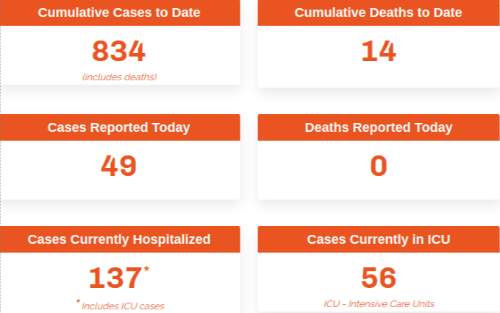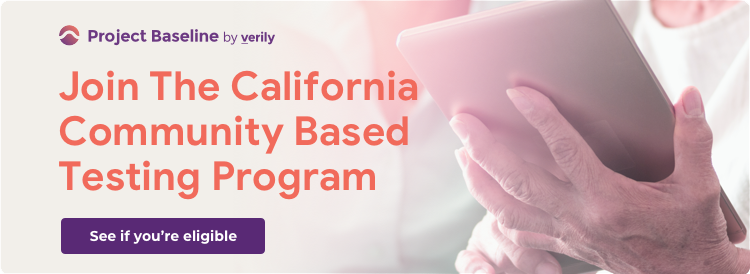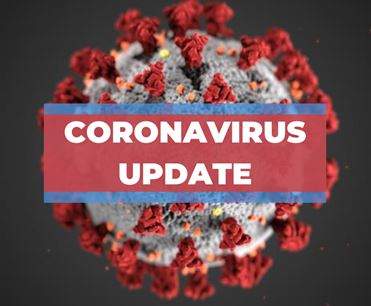
COVID-19 cases in Santa Ana are now at 58 according to the O.C. Health Care Agency. There were 51 new cases yesterday. Countywide there are now 834 cases and we are still at 14 deaths. There are 137 victims in the hospital as of today and 56 are in Intensive Care Units.
Here is how some of the other large cities in Orange County are faring:
- Anaheim continues to lead the county with 79 cases
- Irvine reports 75 cases
- Newport Beach reports 73 cases
- Huntington Beach reports 58 cases
- San Clemente reports 37 cases
- Orange reports 27 cases
- Buena Park reports 25 cases
- Garden Grove reports 21 cases
- Costa Mesa reports 18 cases
As of April 4, 2020, there are a total of 13,438 positive cases and 319 deaths in California, according to the CA Dept. of Public Health.
The CDC reports 304,826 total cases and 7,616 total deaths.
How can people protect themselves?
There is currently no vaccine to prevent COVID-19. The best way to prevent illness is to avoid being exposed to this virus. The virus is thought to spread mainly from person-to-person between people who are in close contact with one another (within about 6 feet). This occurs through respiratory droplets produced when an infected person coughs or sneezes. These droplets can land in the mouths or noses of people who are nearby or possibly be inhaled into the lungs. Older adults and people who have severe underlying chronic medical conditions like heart or lung disease or diabetes seem to be at higher risk for developing more serious complications from COVID-19 illness. Every person has a role to play. So much of protecting yourself and your family comes down to common sense:
- Washing hands with soap and water.
- Clean and disinfect frequently touched surfaces daily. If surfaces are dirty, clean them using detergent or soap and water prior to disinfection.
- Avoiding touching eyes, nose or mouth with unwashed hands.
- Cover your cough or sneeze with a tissue or your elbow.
- Avoiding close contact with people who are sick.
- Staying away from work, school or other people if you become sick with respiratory symptoms like fever and cough.
- If you smoke or vape, consider quitting. Smokers who already have lung disease or reduced lung capacity could be at increased risk of serious illness.
- Following guidance from public health officials.
Please consult with your health care provider about additional steps you may be able to take to protect yourself.
Who is at Higher Risk for Serious Illness from COVID-19?
Early information out of China, where COVID-19 first started, shows that some people are at higher risk of getting very sick from this illness. This includes:
- Older adults (65+)
- Individuals with compromised immune systems
- Individuals who have serious chronic medical conditions like:
- Heart disease
- Diabetes
- Lung disease
If you are at higher risk for serious illness from COVID-19 because of your age or health condition, it is important for you to take actions to reduce your risk of getting sick with the disease, including:
- Isolate at home and practice social distancing.
- Wash your hands often with soap and water for at least 20 seconds, especially after blowing your nose, coughing, or sneezing, or having been in a public place.
- Avoiding touching eyes, nose or mouth with unwashed hands.
- Avoid close contact with people who are sick, and stay away from large gatherings and crowds.
- Consider ways of getting food brought to your house through family, social, or commercial networks.
It is also important that you listen to public health officials who may recommend community actions to reduce potential exposure to COVID-19, especially if COVID-19 is spreading in your community.
For more information visit the CDC’s website.
What if I’m sick?
What are the symptoms of COVID-19?
Typically, human coronaviruses cause mild-to-moderate respiratory illness. Symptoms are very similar to the flu, including:
- Fever
- Cough
- Shortness of breath
COVID-19 can cause more severe respiratory illness.
What if I have symptoms?
Patient: If a person develops symptoms of COVID-19, including fever, cough or shortness of breath, and has reason to believe they may have been exposed, they should call their health care provider before seeking care. Contacting them in advance will make sure that people can get the care they need without putting others at risk. Please be sure to tell your health care provider about your travel history. You can also take the following precautionary measures: avoid contact with sick individuals, wash hands often with soap and warm water for at least 20 seconds.Health Care Provider: Patients who may have infection with this novel coronavirus should wear a surgical mask and be placed in an airborne infection isolation room. If an airborne infection isolation room is not available, the patient should be placed in a private room with the door closed. Health care providers should use standard, contact and airborne precautions and use eye protection. Please see “Update and Interim Guidance on Outbreak of 2019 Novel Coronavirus (2019-nCoV) in Wuhan, China” for more information about infection control. The Public Health Department will issue All Facility Letters to regulated healthcare facilities within California with updated information and guidance; these can be found on the AFL webpage.

California has partnered with Verily’s Project Baseline to launch a community COVID-19 testing program to expand screening and testing for high-risk individuals in certain areas of the state. High-risk individuals located in Santa Clara or San Mateo counties, or within 50 miles of the cities of Riverside or Sacramento, can complete the screener to see if they qualify for testing through this program. Potential participants need internet access and a Google account.
What should you do if you think you’re sick?
Call ahead: If you are experiencing symptoms of COVID-19 and may have had contact with a person with COVID-19, or recently traveled to countries with apparent community spread, call your health care provider before seeking medical care so that appropriate precautions can be taken.
Necesito Hacerme La Prueba Del Covid-19? (PNG)
California has partnered with Verily’s Project Baseline to launch a community COVID-19 testing program to expand screening and testing for high-risk individuals in certain areas of the state. High-risk individuals located in Santa Clara or San Mateo counties, or within 50 miles of the cities of Riverside or Sacramento, can complete the screener to see if they qualify for testing through this program. Potential participants need internet access and a Google account.
Is California able to test for COVID-19?
Twenty-two public health labs in California are testing samples for COVID-19. These labs include the California Department of Public Health’s Laboratory in Richmond, Alameda, Contra Costa, Humboldt, Long Beach, Los Angeles, Monterey, Napa-Solano-Yolo-Marin (located in Solano), Orange, Riverside, Sacramento, San Bernardino, San Diego, San Francisco, San Joaquin, San Luis Obispo, San Mateo, Santa Clara, Shasta, Sonoma, Tulare and Ventura County public health laboratoriesThe Richmond Laboratory will provide diagnostic testing within a 48-hour turnaround time. More public health labs will soon be able to test samples for COVID-19. This means California public health officials will get test results sooner, so that patients will get the best care.
If a person develops symptoms of COVID-19 including fever, cough or shortness of breath, and has reason to believe they may have been exposed, they should call their health care provider before seeking care.
California has partnered with Verily’s Project Baseline to launch a community COVID-19 testing program to expand screening and testing for high-risk individuals in certain areas of the state. High-risk individuals located in Santa Clara or San Mateo counties, or within 50 miles of the cities of Riverside or Sacramento, can complete the screener to see if they qualify for testing through this program. Potential participants need internet access and a Google account.
Getting Care
What is the treatment for COVID-19?
From the international data we have, of those who have tested positive for COVID-19, approximately 80 percent do not exhibit symptoms that would require hospitalization. For patients who are more severely ill, hospitals can provide supportive care. We are continuing to learn more about this novel coronavirus and treatment may change over time.
What if I don’t have health insurance and I need screening or treatment for COVID-19?
- Check with your local community health center or hospital to see if fees for testing can be waived
- See if you’re eligible for Medi-Cal
- See if you’re eligible for Covered California
How is it decided whether a person with a confirmed case of COVID-19 can self-isolate at home or must be confined to a hospital or elsewhere?
Local health departments are working in partnership with the California Department of Public Health and the CDC, and making determinations on whether a person ill with COVID-19 requires hospitalization or if home isolation is appropriate. That decision may be based on multiple factors including severity of illness, need for testing, and appropriateness of home for isolation purposes.
Protecting Others
What is Social Distancing?
Social distancing is a practice recommended by public health officials to stop or slow down the spread of contagious diseases. It requires the creation of physical space between individuals who may spread certain infectious diseases. The key is to minimize the number of gatherings as much as possible and to achieve space between individuals when events or activities cannot be modified, postponed, or canceled. Achieving space between individuals of approximately six feet is advisable. Additionally, there is a particular focus on creating space between individuals who have come together on a one-time or rare basis and who have very different travel patterns such as those coming from multiple countries, states or counties.
For more information, see the Gathering Guidance (PDF).
Should public events be cancelled?
To protect public health and slow the rate of transmission of COVID-19, the California Department of Public Health has determined that all non-essential gatherings should be postponed or canceled across the state until further guidance is issued by the California Department of Public Health. This includes gatherings such as concerts, conferences, sporting events, gyms and theaters. Bars, night clubs, wineries, breweries and wine tasting rooms should close. Restaurants should be closed for in-restaurant seated dining and should be open only to drive-through or other pick-up/delivery options. Certain activities are essential to the functioning of our state and must continue. Hence, this does not apply to essential public transportation, airport travel, shopping at a store, mall, or farmers’ market, or charitable food pantries and distributions.
Is it safe to go to restaurants and bars?
California public health officials have directed bars, night clubs, breweries and wine tasting rooms to close. Restaurants should focus on food delivery and takeout while maximizing social distancing for those who are inside their restaurant.
For more information, see the Food, Beverage and Other Services Guidance (PDF).
Should I wear a mask?
California’s public health officials released guidance on April 1 on the use of cloth face coverings to protect against COVID-19 for Californians who must leave their homes to conduct essential activities. The guidance does not require people to wear face coverings – and is not a substitute for the state’s current guidance regarding social distancing and hand washing. The state also does not recommend Californians use N-95 or surgical masks, which are needed for our health care workers and first responders who will be there for when our lives at risk.
The use of cloth face coverings could reduce the transmission of COVID-19 by individuals who do not have symptoms and may reinforce physical distancing. Public health officials also caution that face coverings may increase risk if users reduce their use of strong defenses such as physical distancing and frequent hand washing.
A link to the new guidance can be found on the California Department of Public Health Face Coverings Guidance web page.
What is the state doing to protect our health?
California has been actively and extensively planning with our local public health and health care delivery systems.
Here are some of the actions California is taking to combat COVID-19:
- Directed Californians to stay at home to slow the spread of the virus
- Made testing free for most Californians who are medically eligible for testing
- Ensured students continue to learn and get meals even when schools physically close
- Deployed the California National Guard to work at food banks
- Distributed millions of N95 masks and other protective gear to health care workers, with more to come soon
- Secured travel trailers and hotels to house people experiencing homelessness
Employment
What should I do if I am unable to work after being exposed to COVID-19?
Individuals who are unable to work due to having or being exposed to COVID-19 (certified by a medical professional) can file a Disability Insurance (DI) claim.
Disability Insurance provides short-term benefit payments to eligible workers who have full or partial loss of wages due to a non-work-related illness, injury, or pregnancy. Benefit amounts are approximately 60-70 percent of wages (depending on income) and range from $50 – $1,300 a week.
Californians who are unable to work because they are caring for an ill or quarantined family member with COVID-19 (certified by a medical professional) can file a Paid Family Leave (PFL) claim.
Paid Family Leave provides up to six weeks of benefit payments to eligibile workers who have a full or partial loss of wages because they need time off work to care for a seriously ill family member or to bond with a new child. Benefit amounts are approximately 60-70 percent of wages (depending on income) and range from $50-$1,300 a week.
For more information related to resources for California’s Employers and Workers, please visit this Labor and Workforce Development Agency webpage.More InformationWhat is the difference between COVID-19 and other coronaviruses?
Coronaviruses are a large family of viruses. There are some coronaviruses that commonly circulate in humans. These viruses cause mild to moderate respiratory illness, although rarely they can cause severe disease. COVID-19 is closely related to two other animal coronaviruses that have caused outbreaks in people—the SARS coronavirus and the MERS (middle east respiratory syndrome) coronavirus.
Guidance and Information
Public: If you have questions about COVID-19 and need assistance finding information online or clarification regarding the information, a statewide hotline number is available 8 a.m. – 5 p.m., 7 days a week at (833) 544-2374.

